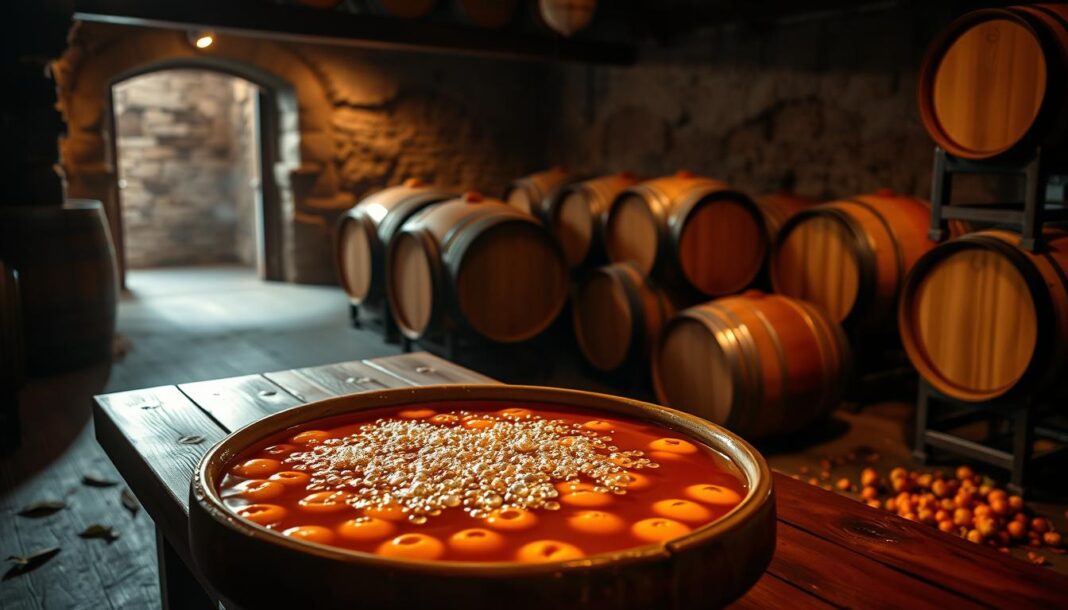For thousands of years, locusts have been a part of various cuisines around the world, serving as a valuable source of nutrition during times of abundance. As a food source, they offer an impressive nutritional profile, rich in proteins and micronutrients. At Historical Foods, we explore the fascinating world of edible insects, specifically locusts, and their growing popularity in modern sustainable cuisine.
As we face growing food security challenges, locusts are being considered a sustainable protein alternative. Entomophagy, or the practice of eating insects as food, is gaining traction among food enthusiasts and culinary professionals alike. In this comprehensive guide, we introduce you to the art of cooking locusts, from preparation techniques to delicious recipes that highlight their unique qualities.
Key Takeaways
- Locusts have been consumed for thousands of years across multiple cultures.
- They offer a high nutritional value, rich in proteins and micronutrients.
- Cooking locusts involves various techniques and recipes.
- Locusts are considered a sustainable protein alternative.
- Entomophagy is gaining popularity among food enthusiasts.
Understanding Locusts as a Food Source
As we explore the world of entomophagy, locusts emerge as a fascinating food source. Rich in nutrients and versatile in culinary applications, locusts are gaining recognition beyond their traditional consumption.
Nutritional Profile
Locusts boast an impressive nutritional profile, with approximately 60% protein by dry weight, making them comparable to beef but with significantly less environmental impact. This high protein content positions locusts as an excellent alternative protein source.
Flavor Profile
The flavor profile of locusts is surprisingly versatile – they have a taste reminiscent of quail and sunflower seeds, with notes similar to shrimp for those familiar with seafood. Locusts take on the flavors they’re cooked with, making them an excellent canvas for various culinary applications.
Cultural Significance
Locust consumption spans multiple continents, from biblical references to traditional practices in Africa, Asia, and the Middle East. Locusts are valued as both emergency food and delicacies, and are considered kosher and halal, making them acceptable within certain dietary frameworks.

Preparing Locusts for Cooking
Preparing locusts for cooking involves several steps that are crucial for both flavor and food safety. To start, it’s essential to clean and process fresh locusts properly.
Cleaning and Processing Fresh Locusts
We recommend parboiling whole locusts in vegetable stock with turmeric for about 3 minutes to clean and partially cook them. This step helps remove impurities and makes the locusts safer to eat. After parboiling, drain the locusts and let them cool somewhat.
Removing Heads, Wings, and Legs
Once cooled, twist off the heads of the locusts; this will also pull out the black, threadlike viscera. Then, remove the wings and small legs, as these parts can be tough and detract from the overall texture.
Pre-Cooking Techniques
After cleaning and processing, the locusts are ready for various pre-cooking techniques. You can season them or marinate them to enhance their flavor before the final cooking step. Ensure they are handled safely to prevent contamination.
Essential Locust Cooked Recipes
Exploring the world of locust recipes opens up new culinary possibilities. Locusts, with their neutral flavor, can be prepared in a variety of ways, making them a versatile ingredient for many dishes.
Crispy Fried Locusts
For a crispy snack, try Chef Moshe Basson’s recipe for Crispy Fried Locusts. Coat pre-cooked locusts in a mixture of seasoned flour, including salt, pepper, chili powder, coriander, and garlic, and then fry in olive oil until golden brown. This method yields a deliciously crunchy exterior.
Locust Schnitzel
Transform locusts into a familiar culinary format with Locust Schnitzel. Clean locusts, dip them in flour, then egg, and finally seasoned breadcrumbs before frying in oil. Serve with a lemony tahini sauce or za’atar pesto for added flavor.
Roasted Desert Locusts
For a simpler preparation, try Roasted Desert Locusts. Remove the legs and wings, then roast in an oven with butter and salt at 170°C for 12 minutes, or until gently browned and crisp. This method brings out the natural flavors of the locust.
Wild Garlic and Ant Emulsion Pairing
Elevate your locust dish with a sophisticated Wild Garlic and Ant Emulsion. Combine neutral oil, egg yolk, wild garlic leaves, and wood ants with a touch of water and salt. This gourmet accompaniment pairs well with roasted or fried locusts, enhancing their flavor.
For more inspiration on cooking locusts, visit our page on roasted locust recipes.
Sustainability and Future of Insect Cuisine
By adopting locusts into our cuisine, we can significantly reduce the environmental impact of our food choices. Malcolm Diack’s locust farming operation in New Zealand exemplifies this potential, aiming to create a closed-loop system that uses zero external resources and produces zero waste. This innovative approach involves growing feed grass for the locusts using the carbon dioxide they produce, creating a self-contained ecosystem.
The ecological advantages of insect protein are substantial. Locusts require significantly less water and land than conventional livestock, producing minimal greenhouse gas emissions. When cooked, locusts take on the flavor of the ingredients they’re paired with – whether it’s oil and salt or more complex seasonings – making them a versatile ingredient for various culinary traditions. Removing the legs and wings before cooking is a common practice, enhancing their appeal.
As we look to the future, the role of insects, including locust, in our diet is likely to become increasingly important. For more information on the benefits of entomophagy, we can refer to studies such as those available on PubMed Central, which provide valuable insights into the potential of insect cuisine to address global food security challenges.


